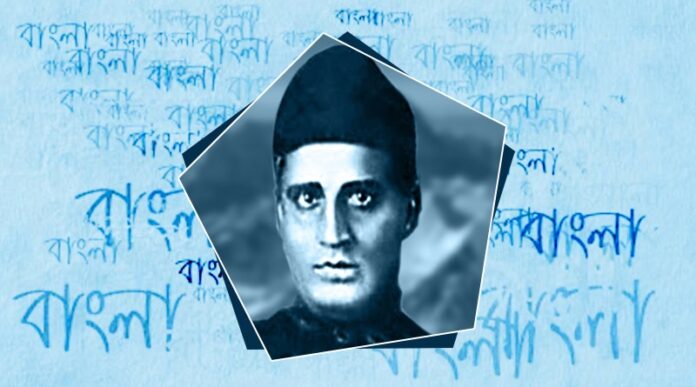Radhanath Sikdar: In the grand saga of human achievement, few stories are as awe-inspiring yet under-celebrated as that of Radhanath Sikdar, a brilliant Bengali mathematician who changed the way the world looked at its highest peak — without ever setting foot on it.
At a time when the Himalayas remained largely unexplored and Mount Everest was just an anonymous snowy summit known only as Peak XV, it was this young Indian’s scientific genius that declared it to be the tallest point on Earth. His weapon was not ropes and ice axes — it was mathematics, vision, and intellect.
🕰️ Setting the Stage: 19th Century British India
The early 1800s marked a period of intense mapping and measuring for the British Empire. Their ambitious Great Trigonometrical Survey of India aimed to scientifically chart the vast and diverse subcontinent — from deserts to dense forests, from coastlines to the mighty Himalayas.
This was a time before GPS, before satellites, and long before mountaineering became a scientific endeavor. Back then, even the identity of the world’s highest mountain was uncertain. Many experts believed that Kangchenjunga was the tallest peak.
But that assumption was about to be shattered.
👨🏫 Enter Radhanath Sikdar: The Quiet Revolutionary
Born in 1813 in Kolkata (then Calcutta), Radhanath Sikdar was a prodigious talent from a young age. He studied at the Hindu College, which was a cradle of the Bengal Renaissance, and showed exceptional aptitude in mathematics and spherical trigonometry.
At just 19, he was recruited into the Survey of India under the British East India Company. Though his official designation was that of a computer (one who computes), his role would go far beyond numerical calculations. He would soon reshape the world’s geographical understanding.
📐 The Great Calculation: Peak XV Gets a Number
In the early 1840s, as the survey team began receiving readings from the Himalayan foothills, they spotted a towering, remote peak they referred to as Peak XV. Its exact location and height were unknown, and the terrain made physical measurement impossible.
The data came to Sikdar at the headquarters in Kolkata. Using the raw angular measurements taken from over 150 miles away, he applied complex spherical trigonometry and atmospheric refraction corrections to account for curvature of the Earth and light distortion through air.
His calculations concluded that Peak XV rose approximately 29,000 feet above sea level — a staggering figure that surpassed every other known mountain.
To avoid skepticism over such a rounded number, the final published figure was slightly modified to 29,002 feet, but the truth was clear — the world’s highest peak had been identified, thanks to a Bengali mind that dared to measure the unimaginable.
🏔️ From Peak XV to Mount Everest
Sikdar’s findings were eventually recognized by Andrew Waugh, the Surveyor General of India at the time. In 1856, he officially announced Peak XV as the world’s highest mountain and named it Mount Everest, after his predecessor Sir George Everest.
Ironically, Sir George Everest himself was reportedly against naming the peak after him, arguing that local names should be honored. However, by the time the name took hold in Western cartography, the damage was done — Radhanath’s name had already begun to fade into the background.
🔬 The Power of Mind Over Mountain
What makes Sikdar’s feat even more extraordinary is the context. He had never seen Mount Everest in person. He worked with primitive instruments by today’s standards, with no digital technology, no aerial views, and no modern computational aids. All he had were the principles of geometry, a pencil, and an analytical mind that could transcend distance.
In doing so, he proved something timeless — that the human intellect, when sharpened with curiosity and rigor, can reach even the highest summits.
📉 Why Is He Not in Our Textbooks?
Despite the magnitude of his contribution, Radhanath Sikdar remains a largely forgotten name in mainstream history. While Sir George Everest’s name graces the mountain, Sikdar’s role has been acknowledged only in specialist circles.
There are no national holidays in his name. No major Indian university carries his legacy forward through academic chairs or research fellowships. And yet, this man — without climbing gear or fame — reached a peak that has stood untouched for centuries.
In a world that increasingly celebrates physical achievement, his story reminds us that intellectual courage is just as heroic.
🌱 His Legacy Lives On — Quiet but Eternal
Even today, with tectonic shifts and glacial movements, the height of Everest slightly changes every few years — but the first scientific proclamation of its true grandeur remains etched in history, thanks to Radhanath Sikdar.
His work laid the foundation for modern geodesy in India. The very act of measuring vast terrain from a distance — of making the invisible knowable — is what science is all about. And Sikdar embodied that ideal long before it became fashionable.
💡 Inspiration for the New Generation
As we observe International Mount Everest Day, it is crucial that we don’t just admire the mountain’s physical conquest, but also the mental conquest that came long before.
Radhanath’s journey wasn’t one of boots on rocky trails, but one of logic, insight, and relentless dedication to precision. His story is an ode to students, educators, scientists, and dreamers — that no matter how distant or insurmountable something may seem, it can be understood and conquered with intellect.
🙏 A Salute from the Summit of Knowledge
On this symbolic day, let us honor not only the mountain but also the mind that first truly saw it for what it was.
To Radhanath Sikdar — the mathematician who touched the Everest not with feet, but with vision.
You didn’t scale the mountain, sir.
You revealed its height to the world.
And that, perhaps, is the loftiest summit of all.







